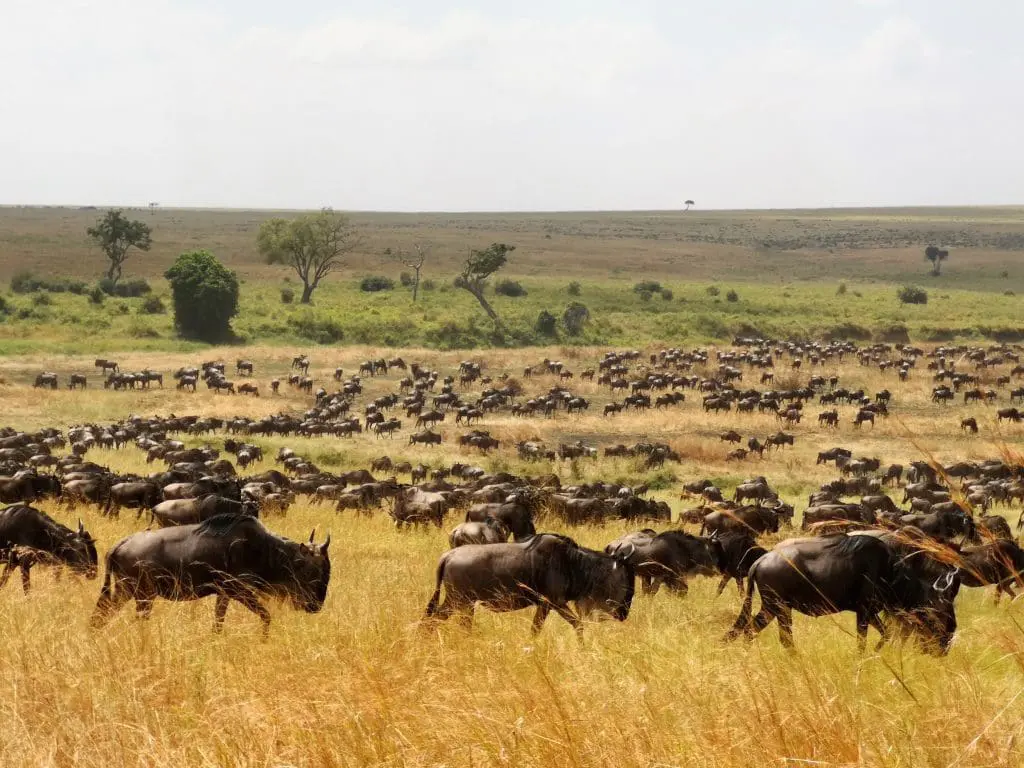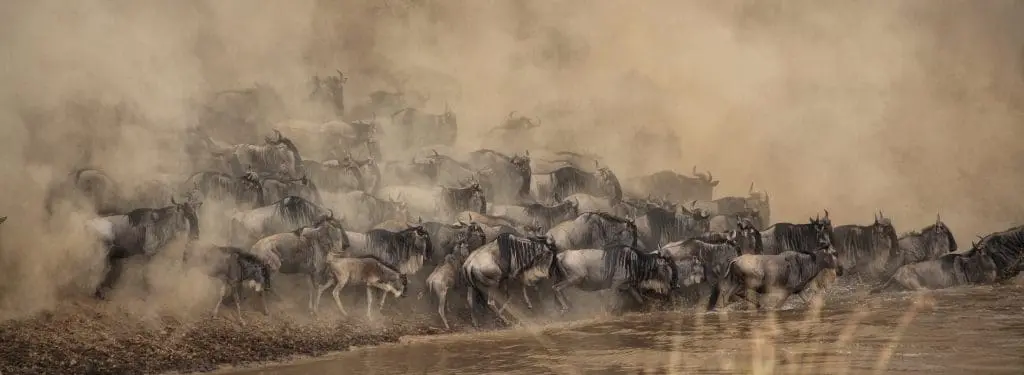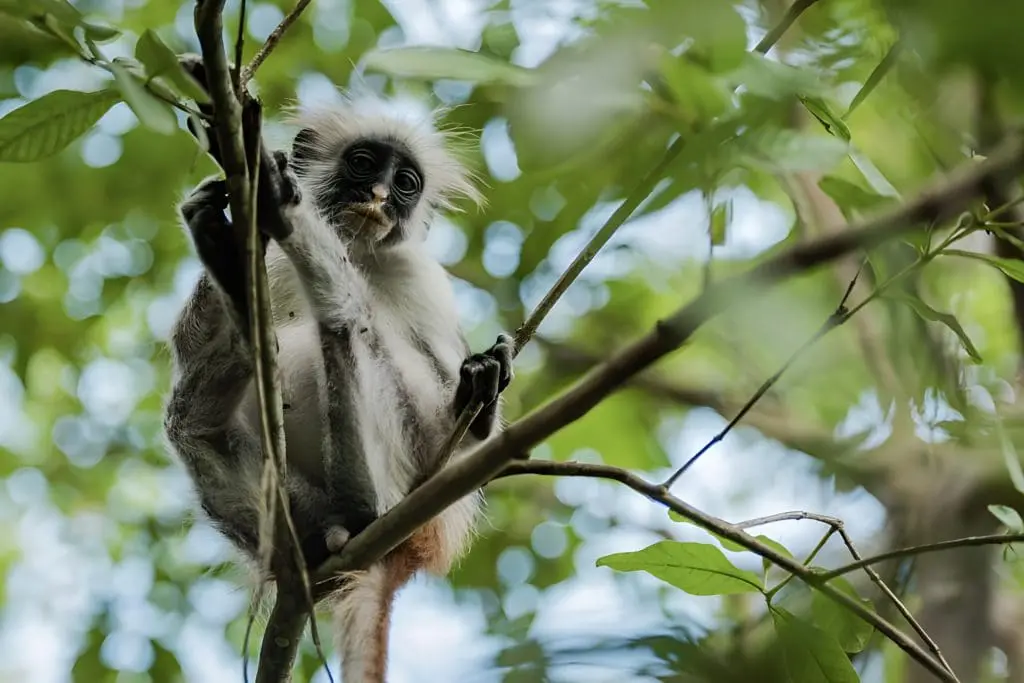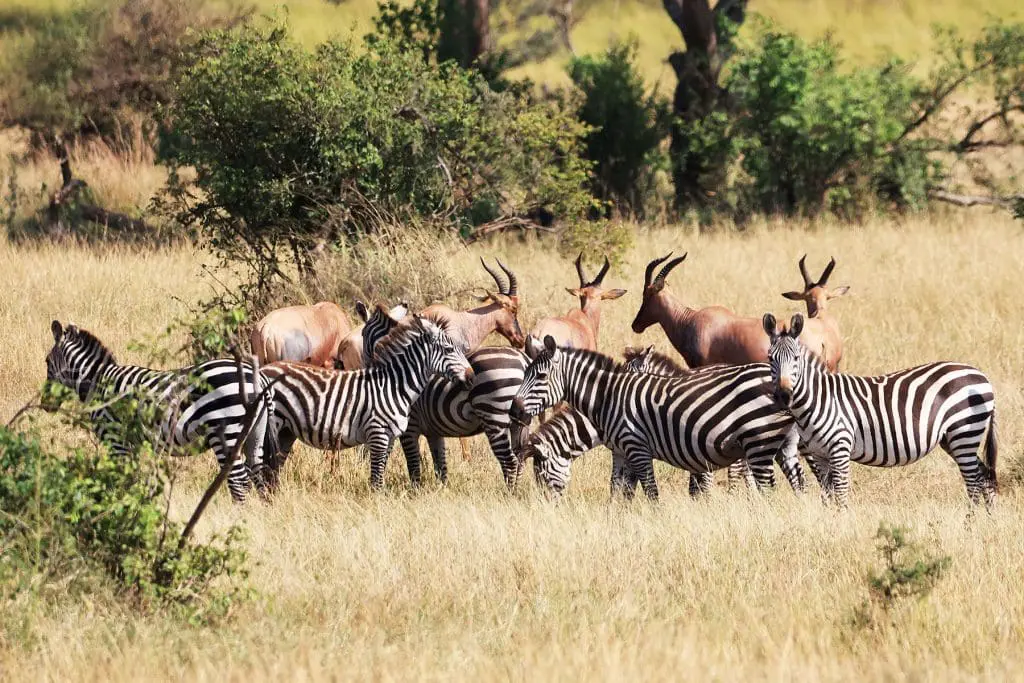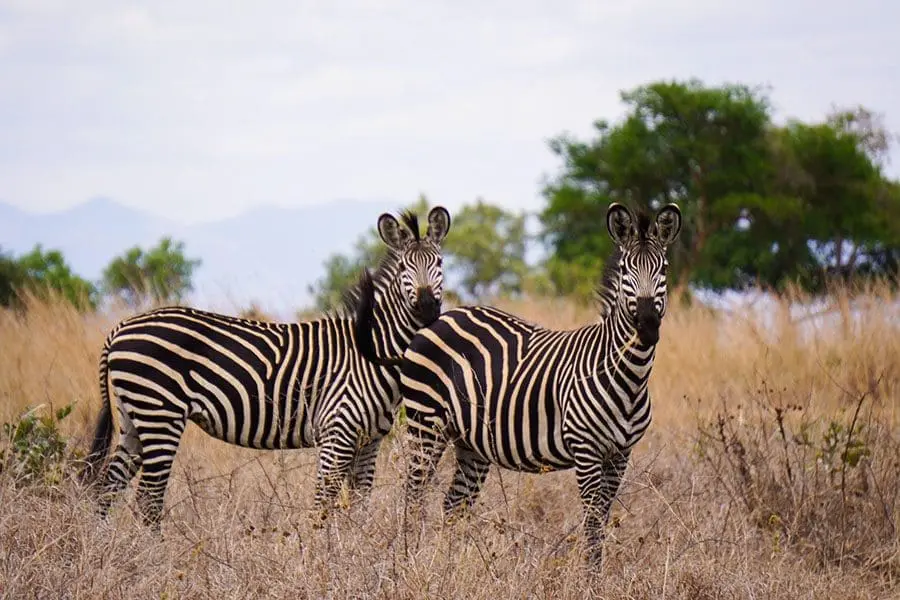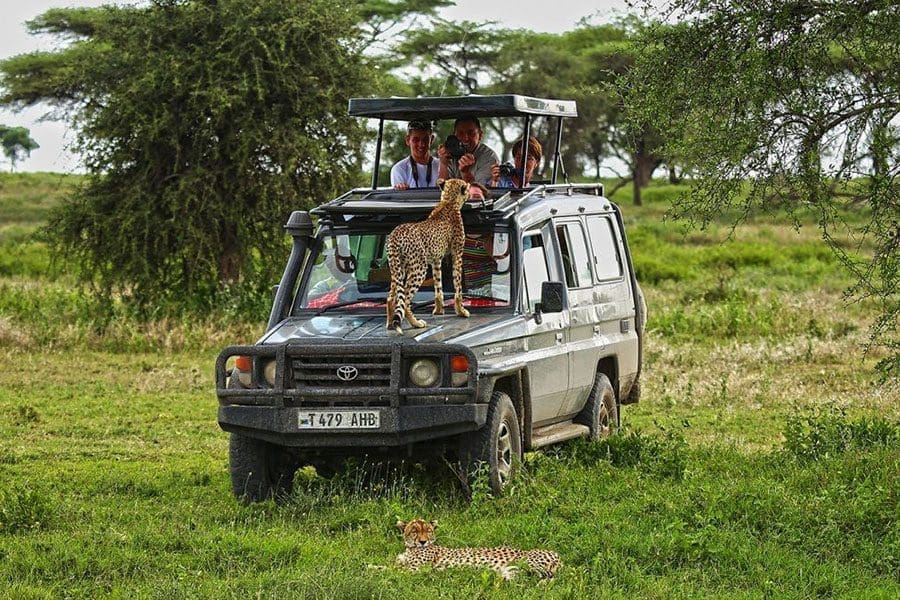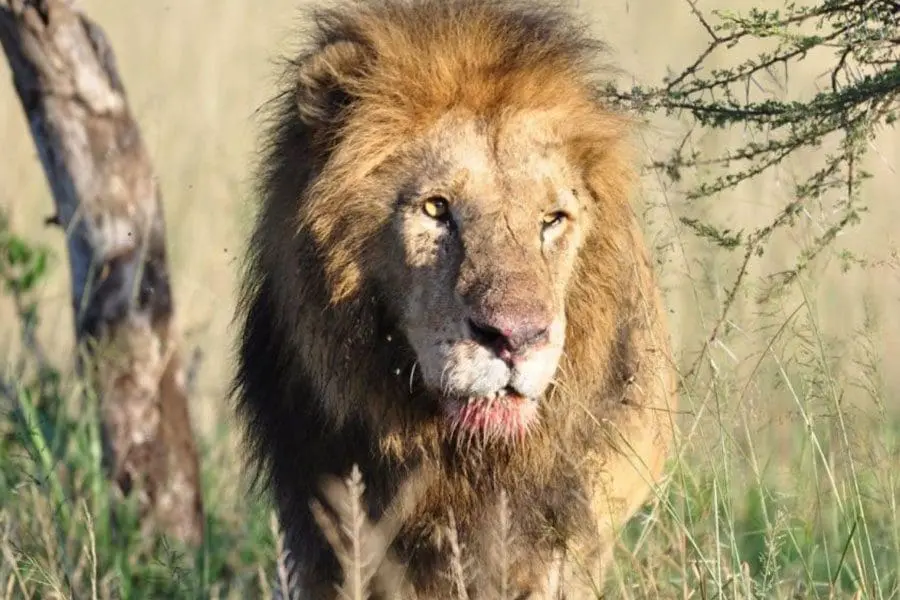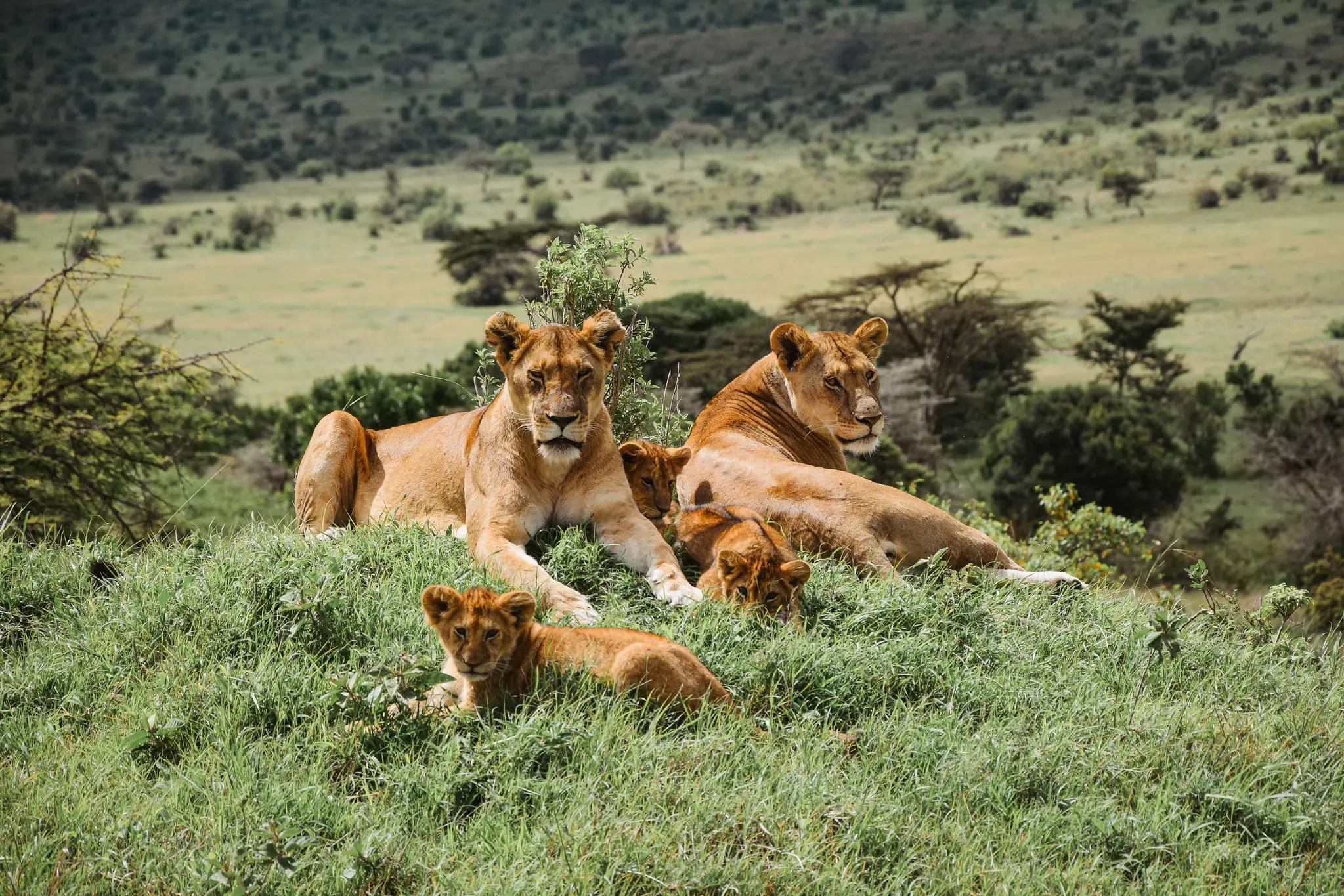
Welcome to
Serengeti National Park
Serengeti National Park is one of Africa’s most iconic destinations, renowned for the Great Migration. In this breathtaking natural phenomenon, over a million wildebeest, joined by 200,000 zebras and 300,000 Thomson’s gazelles, traverse the vast plains in search of fresh grazing lands. This event showcases the raw beauty and rhythm of life in the Serengeti, offering visitors an unparalleled wildlife experience.
Overview
Covering an impressive 14,763 square kilometers of rolling plains, Serengeti National Park stretches to the Kenyan border and almost reaches Lake Victoria. This remarkable ecosystem also includes the neighboring Ngorongoro Conservation Area. Known to the Maasai as Siringitu (“the place where the land moves on forever”) the Serengeti lives up to its name. Here, over three million large animals roam freely across its plains, creating a wildlife spectacle that is hard to watch anywhere else.
The Serengeti ecosystem, one of Earth’s oldest, has remained largely unchanged for over a million years, preserving its unique flora, fauna, and climatic characteristics. It holds two UNESCO World Heritage Sites and two Biosphere Reserves. This dynamic landscape transitions from nutrient-rich flat soils in the south to hilly, less fertile areas in the north, fostering diverse habitats and wildlife.
Even a brief encounter with the Serengeti is enough to leave a deep impression, offering a glimpse into one of nature’s most pristine environments. From majestic big cats to colorful birds and tiny insects, every corner of this park teems with life.
Wildlife
The Serengeti is home to a wide variety of animals, offering some of the best game-viewing opportunities in Africa. Large herds of antelope, including elands, impalas, and gazelles, roam freely alongside zebras and giraffes. Predators thrive here as well: lions, cheetahs, and leopards are frequently spotted, often seen lounging under the shade or feasting on a fresh kill.
The park also hosts nearly 500 bird species, from vibrant lilac-breasted rollers to imposing ostriches. Unique habitats, such as riverine forests, provide refuge for hippos and crocodiles, while the transition between southern plains and northern hills ensures a rich diversity of ecosystems.
Despite its abundance of wildlife, Serengeti’s natural balance remains delicate. While hyenas are common, sightings of rare species like African wild dogs are a special treat for visitors.
History
The human history of the Serengeti is as rich as its wildlife. From ancient hunter-gatherers to modern conservationists, people have played a pivotal role in shaping and protecting this land. The nearby Olduvai Gorge, part of the Ngorongoro Conservation Area, is one of the most significant archaeological sites in the world, revealing fossils of early humans and animals dating back nearly two million years.
Interestingly, the Serengeti avoided European settlement due to the prevalence of tsetse flies and the threat of sleeping sickness. This inadvertent protection allowed its wildlife to thrive, unlike in many other parts of Africa.
When to visit
Serengeti National Park offers exceptional wildlife experiences year-round, though timing your visit with the Great Migration can elevate your adventure. The park’s tropical climate features a rainy season from March to May, with shorter rains in October and November. After the rains, the landscape transforms into lush greenery, attracting countless animals.
Dry Season (June to October): The best time for game viewing, as animals gather around water sources and the Great Migration is in full swing. Iconic river crossings, where wildebeest brave crocodile-infested waters, are a highlight.
Wet Season (November to May): Known as the “green season,” this period sees the park bursting with life. Calving season begins in the southern plains, offering a chance to witness newborns and predator-prey interactions.
With altitudes ranging from 920 to 1,830 meters, temperatures in the Serengeti remain pleasant. Daytime highs average between 15°C and 30°C, with cooler nights making it a comfortable destination even in warmer months.
Migration in the Serengeti
The Great Migration is the Serengeti’s most iconic event, showcasing the primal instincts and sheer determination of its wildlife. Each year, over a million wildebeest, accompanied by zebras and gazelles, journey more than 2,000 miles in search of food and water. Starting in the southern plains during calving season, the herds move northward as the dry season progresses, eventually crossing into Kenya’s Masai Mara.
This epic journey is fraught with danger. River crossings challenge the herds with rapids and lurking crocodiles, while lions and other predators take full advantage of the abundance of prey. Despite these perils, the migration endures as a testament to nature’s resilience.
By late October, the herds return to the Serengeti, completing the cycle of life that has sustained this ecosystem for millennia.
Highlights and FAQ
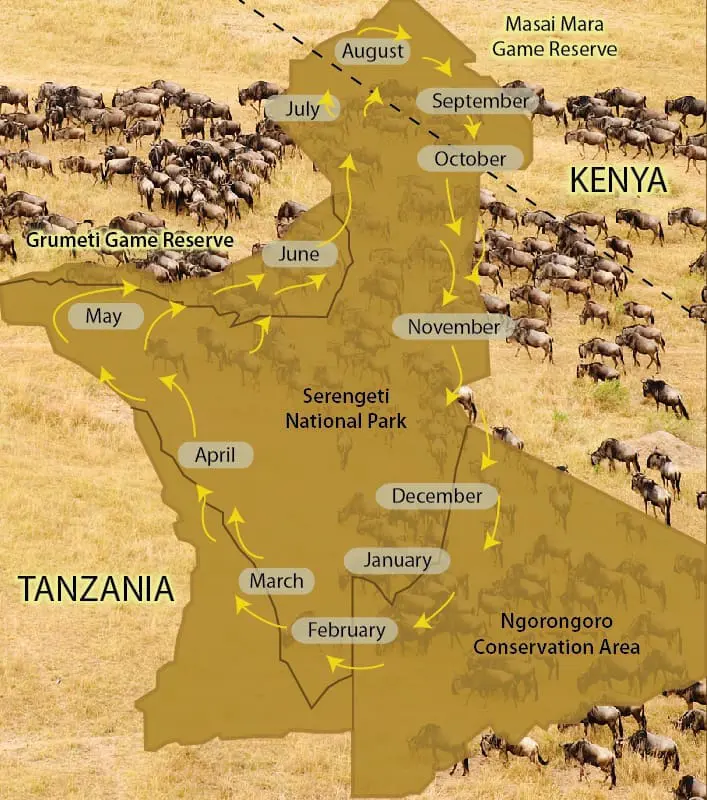
Serengeti -> Arusha: ~ 1h with bush plane; ~6-8h drive
Serengeti -> Tarangire: ~5h drive
Serengeti -> Ngorongoro ~2h drive
Serengeti -> Lake Manyara: ~4,5h drive
Area: 14,750 km²
Travel: 330 km from Arusha
Established: 1951
Visitors: 350.000 / year
Official Homepage
- Elephant
- Lion
- Leopard
- Cheetah
- Wildebeest (~ 1.5 million)
- Zebra
- Gazelle
- Rhinoceros & Hippo
- Nile Crocodile
- Snakes
- Grant & Thomson gazelle
- Ostrich
- Bird watching
- Exciting walking safaris
- Balloon ride in the central Serengeti
